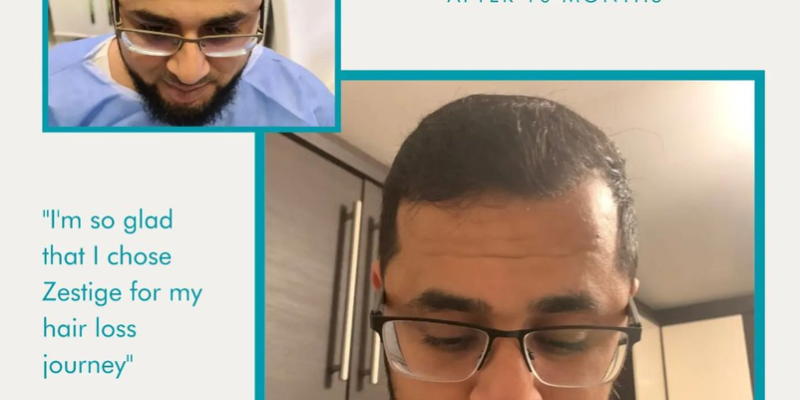
The journey toward restoring a full head of hair often leads many to consider hair transplant surgery, a field that has witnessed significant advancements over the years. Despite the progress, scarring remains an inevitable aspect of the procedure, stirring concerns among potential candidates. This post delves into the nuances of hair transplant scars, exploring the permanence of the procedure, healing times, and the latest strategies for scar management.
Understanding Hair Transplant Techniques
Hair transplant has evolved from the days of hair plugs to sophisticated surgical techniques that offer natural-looking results. The two primary methods employed today are Follicular Unit Extraction (FUE) and Follicular Unit Transplantation (FUT), each leaving its unique mark on the scalp. The choice between these techniques hinges on various factors, including expected scarring, the individual’s hair loss pattern, and the quality of donor hair.
Types of Hair Transplant Scars
Hair transplant procedures, specifically Follicular Unit Extraction (FUE) and Follicular Unit Transplantation (FUT), are revolutionary techniques that have transformed the landscape of hair restoration. However, each method comes with its unique type of scarring. Understanding these scars is crucial for anyone considering hair transplant surgery. Here’s a detailed look at the types of scars associated with each procedure:
1. Follicular Unit Extraction (FUE) Scars
Micro-Punch Technique: FUE uses a micro-punch tool to extract individual hair follicles from the donor area, typically the back and sides of the scalp.
Tiny Dot-Like Scars: Each extraction leaves behind a small, round scar, up to 1 millimeter in diameter. These scars are tiny and dot-like, scattered across the donor area.
Scarring Visibility: The visibility of FUE scars largely depends on the patient’s skin type, the size of the punch used, and the skill of the surgeon. Skilled surgeons can minimise scarring by strategically spacing out the extractions.
Healing and Concealment: FUE scars generally heal well and are less noticeable, especially under short haircuts. They can be further concealed if the patient’s hair is kept at a certain length.
2. Follicular Unit Transplantation (FUT) Scars
Strip Harvesting Method: FUT involves surgically removing a strip of scalp from the donor area. This method is known for providing a high volume of grafts in a single session.
Linear Scar: The removal of the scalp strip leaves behind a linear scar across the donor area. The length and visibility of this scar depend on the strip’s size and the closure technique used.
Closure Techniques: Advanced wound-closure techniques, such as the trichophytic closure, can help make the linear scar less noticeable by allowing hair to grow through the scar line.
Scar Visibility and Pain: FUT scars are more visible than FUE scars and can be a concern for patients who prefer short hairstyles. The area may also experience more post-operative discomfort and a longer healing time compared to FUE.
3. Factors Influencing Scar Visibility
Surgeon’s Skill: The expertise and experience of the surgeon play a critical role in minimising the visibility of scars. Precise technique and careful handling of the donor area can significantly reduce scarring.
Wound-Closure Technique: The method used to close the wound, especially in FUT, can affect how noticeable the scar will be. Advanced techniques aim to promote healing and reduce scar visibility.
Patient’s Healing Ability: Individual differences in skin type and healing ability can also influence how well scars heal and how visible they become after recovery.
4. Choosing the Right Procedure
Consideration of Scarring: Patients should consider their hairstyle preferences, scalp flexibility, and tolerance for visible scarring when choosing between FUE and FUT.
Consultation with a Surgeon: A thorough consultation with a qualified hair transplant surgeon can help patients understand the scarring implications of each procedure and make an informed decision.
While both FUE and FUT are effective hair transplant methods, they differ in their scarring outcomes. Patients must weigh these considerations carefully and discuss their concerns with their surgeon to choose the procedure that best aligns with their aesthetic goals and lifestyle.

Image Source: Zestige Private Healthcare UK
Is Hair Transplant Permanent?
Hair transplants offer a long-term solution for those battling hair loss, with the transplanted follicles being genetically programmed to resist the typical patterns of balding. This means that once the follicles have been successfully grafted onto the recipient site, they will continue to produce hair throughout the individual’s life. While this permanency brings hope to many, it also implies that the scars resulting from the transplant procedure will be permanent fixtures as well. The road to recovery post-transplant is not instantaneous; initial healing can span several weeks, and it may take a full year before the ultimate hair growth results are visible.
Hair Transplant Healing Time
The hair transplant healing time post-transplant is crucial for both recovery and the final appearance of the transplanted hair. FUE typically offers a quicker healing process due to the minimally invasive nature of the procedure, with most patients returning to their normal routines within a few days. FUT may require a longer recovery period due to the surgical removal of a scalp strip. Regardless of the method, following post-operative care instructions diligently is key to minimising scarring and ensuring the best possible outcome.
Hair Transplant Scar Removal Procedures
Hair transplant scars, while permanent, can be made less noticeable through various removal or camouflage techniques, particularly for scars resulting from the Follicular Unit Transplantation (FUT) method. Here are some key approaches:
- Surgical Revision: This method involves the surgical removal of the existing scar tissue followed by a more refined wound-closure technique. The aim is to make the new scar less noticeable than the original.
- FUE into Scar: Utilising the Follicular Unit Extraction (FUE) method, surgeons can transplant hair follicles directly into the scar tissue. This can effectively mask the scar by promoting hair growth through it, blending the area with the surrounding scalp.
- Variability in Success: The effectiveness of these techniques can vary based on several factors, including the nature of the original scar, the patient’s skin type, and the skill of the surgeon performing the procedure.
- Partial Visibility: Despite these interventions, it’s important to manage expectations as eliminating the visibility of scars may not be possible, and a certain level of scarring might still be detectable.
Choosing the Right Procedure and Surgeon
The key to minimising scarring and achieving satisfactory results lies in selecting a skilled and experienced surgeon. A thorough consultation will help determine the most suitable technique based on individual needs, hair characteristics, and scar tolerance. Understanding the implications of each method, including the is hair transplant permanent question and hair transplant healing time, is essential for setting realistic expectations.
Conclusion
At Zestige Private Healthcare, we understand the concerns that come with hair transplant surgery, including questions about its permanence, healing times, and scarring. Our commitment to utilising the latest techniques and technologies ensures that our patients receive the highest level of care, from initial consultation to post-operative recovery. If you’re considering a hair transplant and are concerned about scarring, we invite you to explore the personalised solutions we offer. Let Zestige Private Healthcare guide you toward a confident, hair-rich future, where scars don’t define your journey to restoration.











